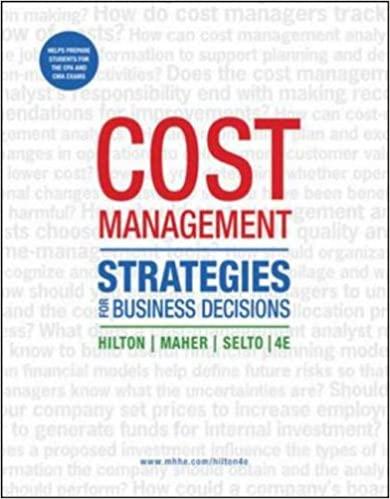Answered step by step
Verified Expert Solution
Question
1 Approved Answer
1. How can the topic be defined succinctly and accurately for someone unfamiliar? 2. In what ways is the topic worth knowing about? 3. What
1. How can the topic be defined succinctly and accurately for someone unfamiliar?
2. In what ways is the topic worth knowing about?
3. What examples or cases demonstrate the topic worth knowing about?
Please answer in around 100 words each.

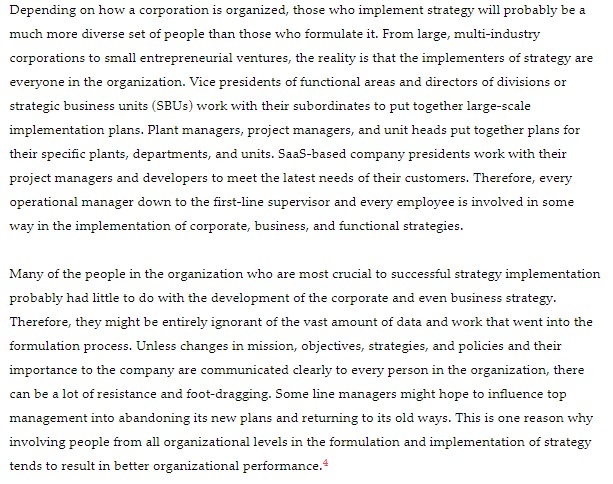
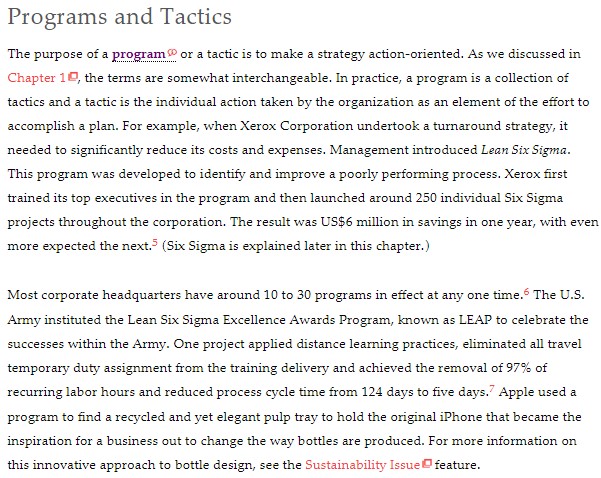
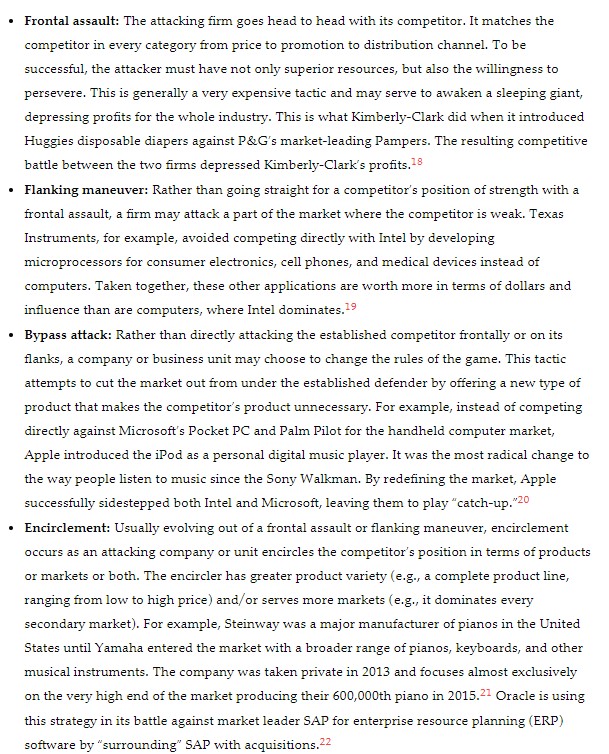
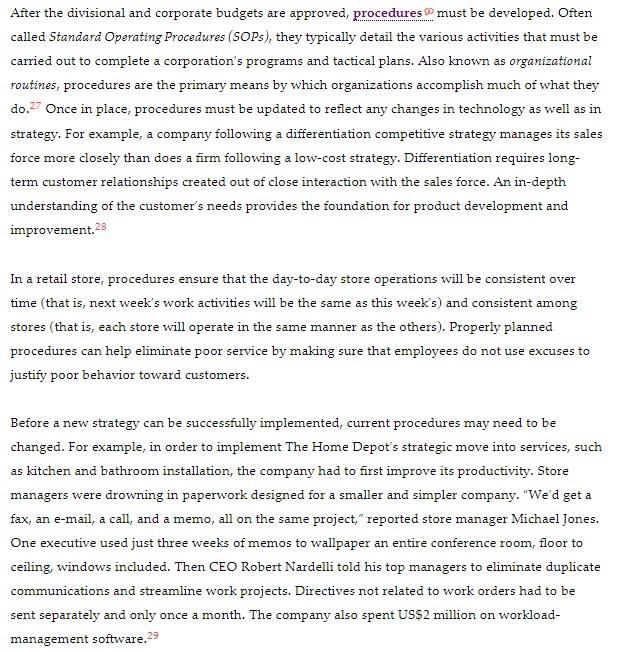
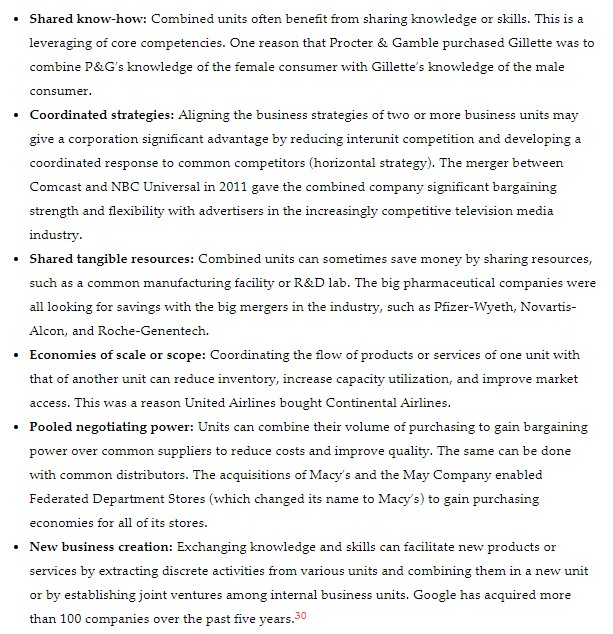
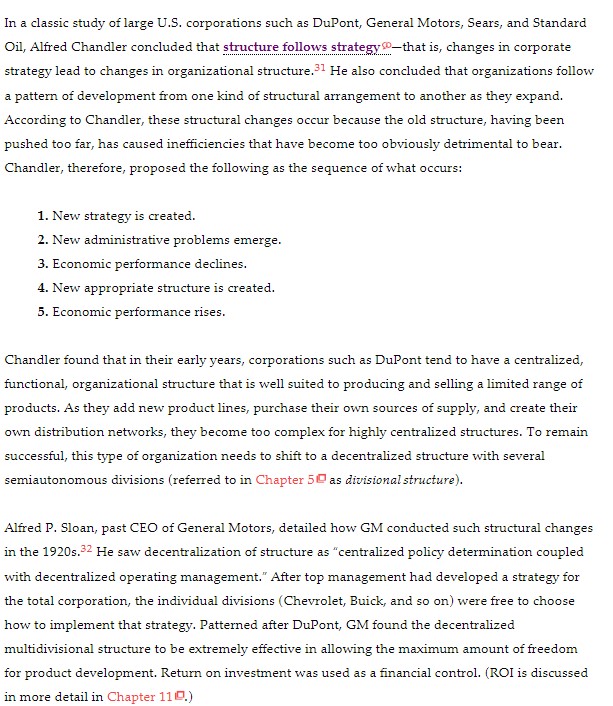
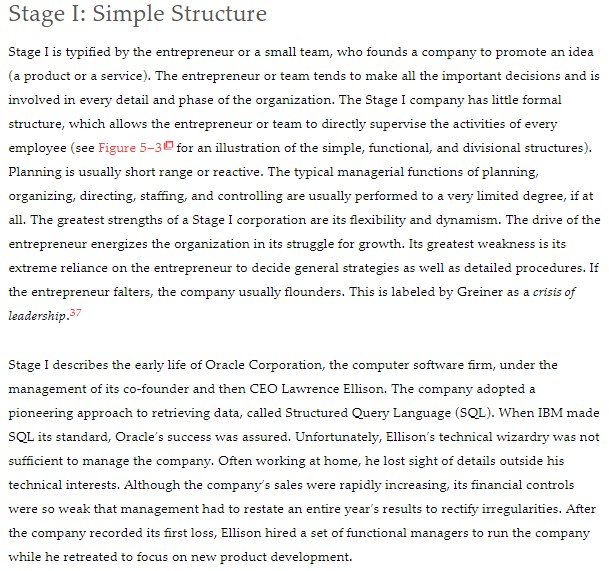
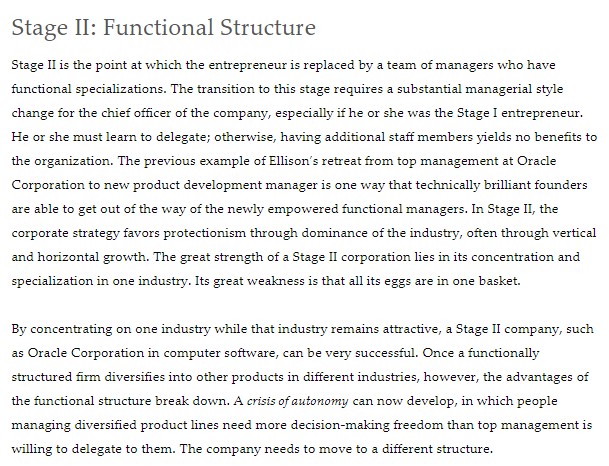
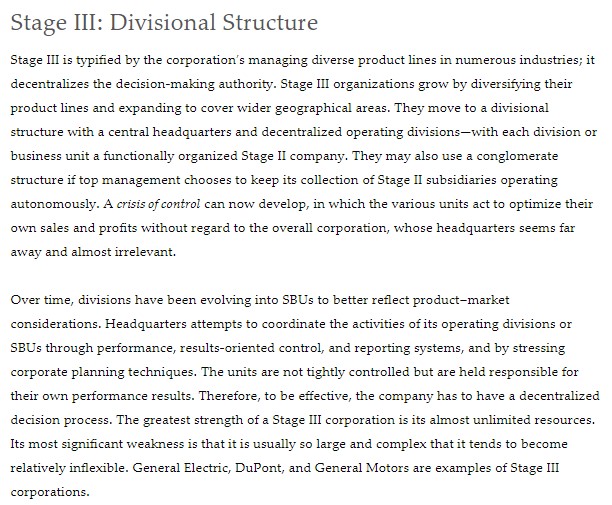
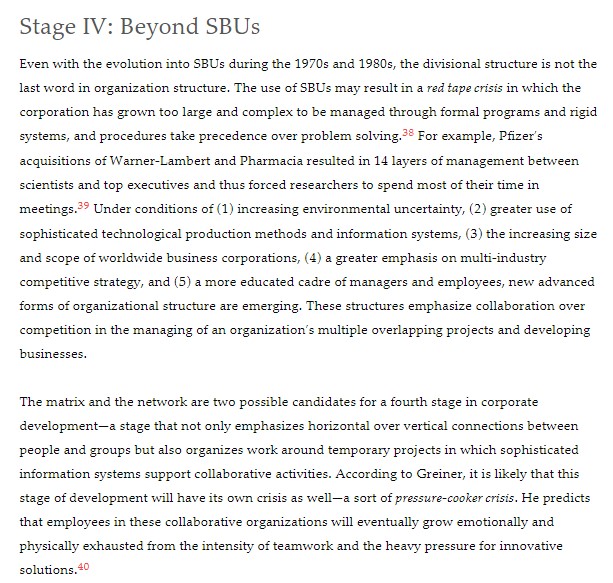 Stage I is typified by the entrepreneur or a small team, who founds a company to promote an idea (a product or a service). The entrepreneur or team tends to make all the important decisions and is involved in every detail and phase of the organization. The Stage I company has little formal structure, which allows the entrepreneur or team to directly supervise the activities of every employee (see Figure 5-3@ for an illustration of the simple, functional, and divisional structures). Planning is usually short range or reactive. The typical managerial functions of planning, organizing, directing, staffing, and controlling are usually performed to a very limited degree, if at all. The greatest strengths of a Stage I corporation are its flexibility and dynamism. The drive of the entrepreneur energizes the organization in its struggle for growth. Its greatest weakness is its extreme reliance on the entrepreneur to decide general strategies as well as detailed procedures. If the entrepreneur falters, the company usually flounders. This is labeled by Greiner as a crisis of leadership. 37 Stage I describes the early life of Oracle Corporation, the computer software firm, under the management of its co-founder and then CEO Lawrence Ellison. The company adopted a pioneering approach to retrieving data, called Structured Query Language (SQL). When IBM made SQL its standard, Oracle's success was assured. Unfortunately, Ellison's technical wizardry was not sufficient to manage the company. Often working at home, he lost sight of details outside his technical interests. Although the company's sales were rapidly increasing, its financial controls were so weak that management had to restate an entire year's results to rectify irregularities. After the company recorded its first loss, Ellison hired a set of functional managers to run the company while he retreated to focus on new product development. After the divisional and corporate budgets are approved, procedures must be developed. Often called Standard Operating Procedures (SOPs), they typically detail the various activities that must be carried out to complete a corporation's programs and tactical plans. Also known as organizational routines, procedures are the primary means by which organizations accomplish much of what they do. 27 Once in place, procedures must be updated to reflect any changes in technology as well as in strategy. For example, a company following a differentiation competitive strategy manages its sales force more closely than does a firm following a low-cost strategy. Differentiation requires longterm customer relationships created out of close interaction with the sales force. An in-depth understanding of the customer's needs provides the foundation for product development and improvement. 28 In a retail store, procedures ensure that the day-to-day store operations will be consistent over time (that is, next week's work activities will be the same as this week's) and consistent among stores (that is, each store will operate in the same manner as the others). Properly planned procedures can help eliminate poor service by making sure that employees do not use excuses to justify poor behavior toward customers. Before a new strategy can be successfully implemented, current procedures may need to be changed. For example, in order to implement The Home Depot's strategic move into services, such as kitchen and bathroom installation, the company had to first improve its productivity. Store managers were drowning in paperwork designed for a smaller and simpler company. "We'd get a fax, an e-mail, a call, and a memo, all on the same project," reported store manager Michael Jones. One executive used just three weeks of memos to wallpaper an entire conference room, floor to ceiling, windows included. Then CEO Robert Nardelli told his top managers to eliminate duplicate communications and streamline work projects. Directives not related to work orders had to be sent separately and only once a month. The company also spent US\$2 million on workloadmanagement software. 29 Stage III is typified by the corporation's managing diverse product lines in numerous industries; it decentralizes the decision-making authority. Stage III organizations grow by diversifying their product lines and expanding to cover wider geographical areas. They move to a divisional structure with a central headquarters and decentralized operating divisions-with each division or business unit a functionally organized Stage II company. They may also use a conglomerate structure if top management chooses to keep its collection of Stage II subsidiaries operating autonomously. A crisis of control can now develop, in which the various units act to optimize their own sales and profits without regard to the overall corporation, whose headquarters seems far away and almost irrelevant. Over time, divisions have been evolving into SBUs to better reflect product-market considerations. Headquarters attempts to coordinate the activities of its operating divisions or SBUs through performance, results-oriented control, and reporting systems, and by stressing corporate planning techniques. The units are not tightly controlled but are held responsible for their own performance results. Therefore, to be effective, the company has to have a decentralized decision process. The greatest strength of a Stage III corporation is its almost unlimited resources. Its most significant weakness is that it is usually so large and complex that it tends to become relatively inflexible. General Electric, DuPont, and General Motors are examples of Stage III corporations. Stage II is the point at which the entrepreneur is replaced by a team of managers who have functional specializations. The transition to this stage requires a substantial managerial style change for the chief officer of the company, especially if he or she was the Stage I entrepreneur. He or she must learn to delegate; otherwise, having additional staff members yields no benefits to the organization. The previous example of Ellison's retreat from top management at Oracle Corporation to new product development manager is one way that technically brilliant founders are able to get out of the way of the newly empowered functional managers. In Stage II, the corporate strategy favors protectionism through dominance of the industry, often through vertical and horizontal growth. The great strength of a Stage II corporation lies in its concentration and specialization in one industry. Its great weakness is that all its eggs are in one basket. By concentrating on one industry while that industry remains attractive, a Stage II company, such as Oracle Corporation in computer software, can be very successful. Once a functionally structured firm diversifies into other products in different industries, however, the advantages of the functional structure break down. A crisis of autonomy can now develop, in which people managing diversified product lines need more decision-making freedom than top management is willing to delegate to them. The company needs to move to a different structure. Depending on how a corporation is organized, those who implement strategy will probably be a much more diverse set of people than those who formulate it. From large, multi-industry corporations to small entrepreneurial ventures, the reality is that the implementers of strategy are everyone in the organization. Vice presidents of functional areas and directors of divisions or strategic business units (SBUs) work with their subordinates to put together large-scale implementation plans. Plant managers, project managers, and unit heads put together plans for their specific plants, departments, and units. SaaS-based company presidents work with their project managers and developers to meet the latest needs of their customers. Therefore, every operational manager down to the first-line supervisor and every employee is involved in some way in the implementation of corporate, business, and functional strategies. Many of the people in the organization who are most crucial to successful strategy implementation probably had little to do with the development of the corporate and even business strategy. Therefore, they might be entirely ignorant of the vast amount of data and work that went into the formulation process. Unless changes in mission, objectives, strategies, and policies and their importance to the company are communicated clearly to every person in the organization, there can be a lot of resistance and foot-dragging. Some line managers might hope to influence top management into abandoning its new plans and returning to its old ways. This is one reason why involving people from all organizational levels in the formulation and implementation of strategy tends to result in better organizational performance. 4 - Shared know-how: Combined units often benefit from sharing knowledge or skills. This is a leveraging of core competencies. One reason that Procter \& Gamble purchased Gillette was to combine P\&G's knowledge of the female consumer with Gillette's knowledge of the male consumer. - Coordinated strategies: Aligning the business strategies of two or more business units may give a corporation significant advantage by reducing interunit competition and developing a coordinated response to common competitors (horizontal strategy). The merger between Comcast and NBC Universal in 2011 gave the combined company significant bargaining strength and flexibility with advertisers in the increasingly competitive television media industry. - Shared tangible resources: Combined units can sometimes save money by sharing resources, such as a common manufacturing facility or R\&D lab. The big pharmaceutical companies were all looking for savings with the big mergers in the industry, such as Pfizer-Wyeth, NovartisAlcon, and Roche-Genentech. - Economies of scale or scope: Coordinating the flow of products or services of one unit with that of another unit can reduce inventory, increase capacity utilization, and improve market access. This was a reason United Airlines bought Continental Airlines. - Pooled negotiating power: Units can combine their volume of purchasing to gain bargaining power over common suppliers to reduce costs and improve quality. The same can be done with common distributors. The acquisitions of Macy's and the May Company enabled Federated Department Stores (which changed its name to Macy's) to gain purchasing economies for all of its stores. - New business creation: Exchanging knowledge and skills can facilitate new products or services by extracting discrete activities from various units and combining them in a new unit or by establishing joint ventures among internal business units. Google has acquired more than 100 companies over the past five years. 30 Strategy implementation so is the sum total of the activities and choices required for the execution of a strategic plan. It is the process by which objectives, strategies, and policies are put into action through the development of programs and tactics, budgets, and procedures. Implementation should be evaluated as strategy is being formulated although many companies separate the two. Implementation is the key part of strategic management for without implementation we have nothing. Strategy formulation and strategy implementation should be considered as two sides of the same coin. Poor implementation has been blamed for a number of strategic failures. Merger and acquisitions activities are clear types of very visible implementations. Some studies have shown that half of all acquisitions fail to achieve what was expected of them while recent studies have reported that 83% of companies fail to achieve the goals of a merger. 1 The most mentioned problems reported in post-merger integration were poor communication, unrealistic synergy expectations, structural problems, missing master plans, lost momentum, lack of top management commitment, and unclear strategic fit. A study by A. T. Kearney found that a company has just two years in which to make an acquisition perform. After the second year, the window of opportunity for forging synergies has mostly closed. Kearney's study was supported by further independent research by Bert, MacDonald, and Herd. Among the most successful acquirers studied, 70% to 85% of all merger synergies were realized within the first 12 months, with the remainder being realized in vear two 2 Even with the evolution into SBUs during the 1970s and 1980s, the divisional structure is not the last word in organization structure. The use of SBUs may result in a red tape crisis in which the corporation has grown too large and complex to be managed through formal programs and rigid systems, and procedures take precedence over problem solving. 38 For example, Pfizer's acquisitions of Warner-Lambert and Pharmacia resulted in 14 layers of management between scientists and top executives and thus forced researchers to spend most of their time in meetings. 39 Under conditions of (1) increasing environmental uncertainty, (2) greater use of sophisticated technological production methods and information systems, (3) the increasing size and scope of worldwide business corporations, (4) a greater emphasis on multi-industry competitive strategy, and (5) a more educated cadre of managers and employees, new advanced forms of organizational structure are emerging. These structures emphasize collaboration over competition in the managing of an organization's multiple overlapping projects and developing businesses. The matrix and the network are two possible candidates for a fourth stage in corporate development-a stage that not only emphasizes horizontal over vertical connections between people and groups but also organizes work around temporary projects in which sophisticated information systems support collaborative activities. According to Greiner, it is likely that this stage of development will have its own crisis as well-a sort of pressure-cooker crisis. He predicts that employees in these collaborative organizations will eventually grow emotionally and physically exhausted from the intensity of teamwork and the heavy pressure for innovative solutions. 40 The purpose of a program or a tactic is to make a strategy action-oriented. As we discussed in Chapter 10 , the terms are somewhat interchangeable. In practice, a program is a collection of tactics and a tactic is the individual action taken by the organization as an element of the effort to accomplish a plan. For example, when Xerox Corporation undertook a turnaround strategy, it needed to significantly reduce its costs and expenses. Management introduced Lean Six Sigma. This program was developed to identify and improve a poorly performing process. Xerox first trained its top executives in the program and then launched around 250 individual Six Sigma projects throughout the corporation. The result was US\$6 million in savings in one year, with even more expected the next. 5 (Six Sigma is explained later in this chapter.) Most corporate headquarters have around 10 to 30 programs in effect at any one time. 6 The U.S. Army instituted the Lean Six Sigma Excellence Awards Program, known as LEAP to celebrate the successes within the Army. One project applied distance learning practices, eliminated all travel temporary duty assignment from the training delivery and achieved the removal of 97% of recurring labor hours and reduced process cycle time from 124 days to five days. 7 Apple used a program to find a recycled and yet elegant pulp tray to hold the original iPhone that became the inspiration for a business out to change the way bottles are produced. For more information on this innovative approach to bottle design, see the Sustainability Issue feature. In a classic study of large U.S. corporations such as DuPont, General Motors, Sears, and Standard strategy lead to changes in organizational structure. 31He also concluded that organizations follow a pattern of development from one kind of structural arrangement to another as they expand. According to Chandler, these structural changes occur because the old structure, having been pushed too far, has caused inefficiencies that have become too obviously detrimental to bear. Chandler, therefore, proposed the following as the sequence of what occurs: 1. New strategy is created. 2. New administrative problems emerge. 3. Economic performance declines. 4. New appropriate structure is created. 5. Economic performance rises. Chandler found that in their early years, corporations such as DuPont tend to have a centralized, functional, organizational structure that is well suited to producing and selling a limited range of products. As they add new product lines, purchase their own sources of supply, and create their own distribution networks, they become too complex for highly centralized structures. To remain successful, this type of organization needs to shift to a decentralized structure with several semiautonomous divisions (referred to in Chapter 5 as divisionalstructure). Alfred P. Sloan, past CEO of General Motors, detailed how GM conducted such structural changes in the 1920s.32 He saw decentralization of structure as "centralized policy determination coupled with decentralized operating management." After top management had developed a strategy for the total corporation, the individual divisions (Chevrolet, Buick, and so on) were free to choose how to implement that strategy. Patterned after DuPont, GM found the decentralized multidivisional structure to be extremely effective in allowing the maximum amount of freedom for product development. Return on investment was used as a financial control. (ROI is discussed in more detail in Chapter 11 .) - Frontal assault: The attacking firm goes head to head with its competitor. It matches the competitor in every category from price to promotion to distribution channel. To be successful, the attacker must have not only superior resources, but also the willingness to persevere. This is generally a very expensive tactic and may serve to awaken a sleeping giant, depressing profits for the whole industry. This is what Kimberly-Clark did when it introduced Huggies disposable diapers against P&G 's market-leading Pampers. The resulting competitive battle between the two firms depressed Kimberly-Clark's profits. 18 - Flanking maneuver: Rather than going straight for a competitor's position of strength with a frontal assault, a firm may attack a part of the market where the competitor is weak. Texas Instruments, for example, avoided competing directly with Intel by developing microprocessors for consumer electronics, cell phones, and medical devices instead of computers. Taken together, these other applications are worth more in terms of dollars and influence than are computers, where Intel dominates. 19 - Bypass attack: Rather than directly attacking the established competitor frontally or on its flanks, a company or business unit may choose to change the rules of the game. This tactic attempts to cut the market out from under the established defender by offering a new type of product that makes the competitor's product unnecessary. For example, instead of competing directly against Microsoft's Pocket PC and Palm Pilot for the handheld computer market, Apple introduced the iPod as a personal digital music player. It was the most radical change to the way people listen to music since the Sony Walkman. By redefining the market, Apple successfully sidestepped both Intel and Microsoft, leaving them to play "catch-up."20 - Encirclement: Usually evolving out of a frontal assault or flanking maneuver, encirclement occurs as an attacking company or unit encircles the competitor's position in terms of products or markets or both. The encircler has greater product variety (e.g., a complete product line, ranging from low to high price) and/or serves more markets (e.g., it dominates every secondary market). For example, Steinway was a major manufacturer of pianos in the United States until Yamaha entered the market with a broader range of pianos, keyboards, and other musical instruments. The company was taken private in 2013 and focuses almost exclusively on the very high end of the market producing their 600,000th piano in 2015. 21 Oracle is using this strategy in its battle against market leader SAP for enterprise resource planning (ERP) software by "surrounding" SAP with acquisitions. 22
Stage I is typified by the entrepreneur or a small team, who founds a company to promote an idea (a product or a service). The entrepreneur or team tends to make all the important decisions and is involved in every detail and phase of the organization. The Stage I company has little formal structure, which allows the entrepreneur or team to directly supervise the activities of every employee (see Figure 5-3@ for an illustration of the simple, functional, and divisional structures). Planning is usually short range or reactive. The typical managerial functions of planning, organizing, directing, staffing, and controlling are usually performed to a very limited degree, if at all. The greatest strengths of a Stage I corporation are its flexibility and dynamism. The drive of the entrepreneur energizes the organization in its struggle for growth. Its greatest weakness is its extreme reliance on the entrepreneur to decide general strategies as well as detailed procedures. If the entrepreneur falters, the company usually flounders. This is labeled by Greiner as a crisis of leadership. 37 Stage I describes the early life of Oracle Corporation, the computer software firm, under the management of its co-founder and then CEO Lawrence Ellison. The company adopted a pioneering approach to retrieving data, called Structured Query Language (SQL). When IBM made SQL its standard, Oracle's success was assured. Unfortunately, Ellison's technical wizardry was not sufficient to manage the company. Often working at home, he lost sight of details outside his technical interests. Although the company's sales were rapidly increasing, its financial controls were so weak that management had to restate an entire year's results to rectify irregularities. After the company recorded its first loss, Ellison hired a set of functional managers to run the company while he retreated to focus on new product development. After the divisional and corporate budgets are approved, procedures must be developed. Often called Standard Operating Procedures (SOPs), they typically detail the various activities that must be carried out to complete a corporation's programs and tactical plans. Also known as organizational routines, procedures are the primary means by which organizations accomplish much of what they do. 27 Once in place, procedures must be updated to reflect any changes in technology as well as in strategy. For example, a company following a differentiation competitive strategy manages its sales force more closely than does a firm following a low-cost strategy. Differentiation requires longterm customer relationships created out of close interaction with the sales force. An in-depth understanding of the customer's needs provides the foundation for product development and improvement. 28 In a retail store, procedures ensure that the day-to-day store operations will be consistent over time (that is, next week's work activities will be the same as this week's) and consistent among stores (that is, each store will operate in the same manner as the others). Properly planned procedures can help eliminate poor service by making sure that employees do not use excuses to justify poor behavior toward customers. Before a new strategy can be successfully implemented, current procedures may need to be changed. For example, in order to implement The Home Depot's strategic move into services, such as kitchen and bathroom installation, the company had to first improve its productivity. Store managers were drowning in paperwork designed for a smaller and simpler company. "We'd get a fax, an e-mail, a call, and a memo, all on the same project," reported store manager Michael Jones. One executive used just three weeks of memos to wallpaper an entire conference room, floor to ceiling, windows included. Then CEO Robert Nardelli told his top managers to eliminate duplicate communications and streamline work projects. Directives not related to work orders had to be sent separately and only once a month. The company also spent US\$2 million on workloadmanagement software. 29 Stage III is typified by the corporation's managing diverse product lines in numerous industries; it decentralizes the decision-making authority. Stage III organizations grow by diversifying their product lines and expanding to cover wider geographical areas. They move to a divisional structure with a central headquarters and decentralized operating divisions-with each division or business unit a functionally organized Stage II company. They may also use a conglomerate structure if top management chooses to keep its collection of Stage II subsidiaries operating autonomously. A crisis of control can now develop, in which the various units act to optimize their own sales and profits without regard to the overall corporation, whose headquarters seems far away and almost irrelevant. Over time, divisions have been evolving into SBUs to better reflect product-market considerations. Headquarters attempts to coordinate the activities of its operating divisions or SBUs through performance, results-oriented control, and reporting systems, and by stressing corporate planning techniques. The units are not tightly controlled but are held responsible for their own performance results. Therefore, to be effective, the company has to have a decentralized decision process. The greatest strength of a Stage III corporation is its almost unlimited resources. Its most significant weakness is that it is usually so large and complex that it tends to become relatively inflexible. General Electric, DuPont, and General Motors are examples of Stage III corporations. Stage II is the point at which the entrepreneur is replaced by a team of managers who have functional specializations. The transition to this stage requires a substantial managerial style change for the chief officer of the company, especially if he or she was the Stage I entrepreneur. He or she must learn to delegate; otherwise, having additional staff members yields no benefits to the organization. The previous example of Ellison's retreat from top management at Oracle Corporation to new product development manager is one way that technically brilliant founders are able to get out of the way of the newly empowered functional managers. In Stage II, the corporate strategy favors protectionism through dominance of the industry, often through vertical and horizontal growth. The great strength of a Stage II corporation lies in its concentration and specialization in one industry. Its great weakness is that all its eggs are in one basket. By concentrating on one industry while that industry remains attractive, a Stage II company, such as Oracle Corporation in computer software, can be very successful. Once a functionally structured firm diversifies into other products in different industries, however, the advantages of the functional structure break down. A crisis of autonomy can now develop, in which people managing diversified product lines need more decision-making freedom than top management is willing to delegate to them. The company needs to move to a different structure. Depending on how a corporation is organized, those who implement strategy will probably be a much more diverse set of people than those who formulate it. From large, multi-industry corporations to small entrepreneurial ventures, the reality is that the implementers of strategy are everyone in the organization. Vice presidents of functional areas and directors of divisions or strategic business units (SBUs) work with their subordinates to put together large-scale implementation plans. Plant managers, project managers, and unit heads put together plans for their specific plants, departments, and units. SaaS-based company presidents work with their project managers and developers to meet the latest needs of their customers. Therefore, every operational manager down to the first-line supervisor and every employee is involved in some way in the implementation of corporate, business, and functional strategies. Many of the people in the organization who are most crucial to successful strategy implementation probably had little to do with the development of the corporate and even business strategy. Therefore, they might be entirely ignorant of the vast amount of data and work that went into the formulation process. Unless changes in mission, objectives, strategies, and policies and their importance to the company are communicated clearly to every person in the organization, there can be a lot of resistance and foot-dragging. Some line managers might hope to influence top management into abandoning its new plans and returning to its old ways. This is one reason why involving people from all organizational levels in the formulation and implementation of strategy tends to result in better organizational performance. 4 - Shared know-how: Combined units often benefit from sharing knowledge or skills. This is a leveraging of core competencies. One reason that Procter \& Gamble purchased Gillette was to combine P\&G's knowledge of the female consumer with Gillette's knowledge of the male consumer. - Coordinated strategies: Aligning the business strategies of two or more business units may give a corporation significant advantage by reducing interunit competition and developing a coordinated response to common competitors (horizontal strategy). The merger between Comcast and NBC Universal in 2011 gave the combined company significant bargaining strength and flexibility with advertisers in the increasingly competitive television media industry. - Shared tangible resources: Combined units can sometimes save money by sharing resources, such as a common manufacturing facility or R\&D lab. The big pharmaceutical companies were all looking for savings with the big mergers in the industry, such as Pfizer-Wyeth, NovartisAlcon, and Roche-Genentech. - Economies of scale or scope: Coordinating the flow of products or services of one unit with that of another unit can reduce inventory, increase capacity utilization, and improve market access. This was a reason United Airlines bought Continental Airlines. - Pooled negotiating power: Units can combine their volume of purchasing to gain bargaining power over common suppliers to reduce costs and improve quality. The same can be done with common distributors. The acquisitions of Macy's and the May Company enabled Federated Department Stores (which changed its name to Macy's) to gain purchasing economies for all of its stores. - New business creation: Exchanging knowledge and skills can facilitate new products or services by extracting discrete activities from various units and combining them in a new unit or by establishing joint ventures among internal business units. Google has acquired more than 100 companies over the past five years. 30 Strategy implementation so is the sum total of the activities and choices required for the execution of a strategic plan. It is the process by which objectives, strategies, and policies are put into action through the development of programs and tactics, budgets, and procedures. Implementation should be evaluated as strategy is being formulated although many companies separate the two. Implementation is the key part of strategic management for without implementation we have nothing. Strategy formulation and strategy implementation should be considered as two sides of the same coin. Poor implementation has been blamed for a number of strategic failures. Merger and acquisitions activities are clear types of very visible implementations. Some studies have shown that half of all acquisitions fail to achieve what was expected of them while recent studies have reported that 83% of companies fail to achieve the goals of a merger. 1 The most mentioned problems reported in post-merger integration were poor communication, unrealistic synergy expectations, structural problems, missing master plans, lost momentum, lack of top management commitment, and unclear strategic fit. A study by A. T. Kearney found that a company has just two years in which to make an acquisition perform. After the second year, the window of opportunity for forging synergies has mostly closed. Kearney's study was supported by further independent research by Bert, MacDonald, and Herd. Among the most successful acquirers studied, 70% to 85% of all merger synergies were realized within the first 12 months, with the remainder being realized in vear two 2 Even with the evolution into SBUs during the 1970s and 1980s, the divisional structure is not the last word in organization structure. The use of SBUs may result in a red tape crisis in which the corporation has grown too large and complex to be managed through formal programs and rigid systems, and procedures take precedence over problem solving. 38 For example, Pfizer's acquisitions of Warner-Lambert and Pharmacia resulted in 14 layers of management between scientists and top executives and thus forced researchers to spend most of their time in meetings. 39 Under conditions of (1) increasing environmental uncertainty, (2) greater use of sophisticated technological production methods and information systems, (3) the increasing size and scope of worldwide business corporations, (4) a greater emphasis on multi-industry competitive strategy, and (5) a more educated cadre of managers and employees, new advanced forms of organizational structure are emerging. These structures emphasize collaboration over competition in the managing of an organization's multiple overlapping projects and developing businesses. The matrix and the network are two possible candidates for a fourth stage in corporate development-a stage that not only emphasizes horizontal over vertical connections between people and groups but also organizes work around temporary projects in which sophisticated information systems support collaborative activities. According to Greiner, it is likely that this stage of development will have its own crisis as well-a sort of pressure-cooker crisis. He predicts that employees in these collaborative organizations will eventually grow emotionally and physically exhausted from the intensity of teamwork and the heavy pressure for innovative solutions. 40 The purpose of a program or a tactic is to make a strategy action-oriented. As we discussed in Chapter 10 , the terms are somewhat interchangeable. In practice, a program is a collection of tactics and a tactic is the individual action taken by the organization as an element of the effort to accomplish a plan. For example, when Xerox Corporation undertook a turnaround strategy, it needed to significantly reduce its costs and expenses. Management introduced Lean Six Sigma. This program was developed to identify and improve a poorly performing process. Xerox first trained its top executives in the program and then launched around 250 individual Six Sigma projects throughout the corporation. The result was US\$6 million in savings in one year, with even more expected the next. 5 (Six Sigma is explained later in this chapter.) Most corporate headquarters have around 10 to 30 programs in effect at any one time. 6 The U.S. Army instituted the Lean Six Sigma Excellence Awards Program, known as LEAP to celebrate the successes within the Army. One project applied distance learning practices, eliminated all travel temporary duty assignment from the training delivery and achieved the removal of 97% of recurring labor hours and reduced process cycle time from 124 days to five days. 7 Apple used a program to find a recycled and yet elegant pulp tray to hold the original iPhone that became the inspiration for a business out to change the way bottles are produced. For more information on this innovative approach to bottle design, see the Sustainability Issue feature. In a classic study of large U.S. corporations such as DuPont, General Motors, Sears, and Standard strategy lead to changes in organizational structure. 31He also concluded that organizations follow a pattern of development from one kind of structural arrangement to another as they expand. According to Chandler, these structural changes occur because the old structure, having been pushed too far, has caused inefficiencies that have become too obviously detrimental to bear. Chandler, therefore, proposed the following as the sequence of what occurs: 1. New strategy is created. 2. New administrative problems emerge. 3. Economic performance declines. 4. New appropriate structure is created. 5. Economic performance rises. Chandler found that in their early years, corporations such as DuPont tend to have a centralized, functional, organizational structure that is well suited to producing and selling a limited range of products. As they add new product lines, purchase their own sources of supply, and create their own distribution networks, they become too complex for highly centralized structures. To remain successful, this type of organization needs to shift to a decentralized structure with several semiautonomous divisions (referred to in Chapter 5 as divisionalstructure). Alfred P. Sloan, past CEO of General Motors, detailed how GM conducted such structural changes in the 1920s.32 He saw decentralization of structure as "centralized policy determination coupled with decentralized operating management." After top management had developed a strategy for the total corporation, the individual divisions (Chevrolet, Buick, and so on) were free to choose how to implement that strategy. Patterned after DuPont, GM found the decentralized multidivisional structure to be extremely effective in allowing the maximum amount of freedom for product development. Return on investment was used as a financial control. (ROI is discussed in more detail in Chapter 11 .) - Frontal assault: The attacking firm goes head to head with its competitor. It matches the competitor in every category from price to promotion to distribution channel. To be successful, the attacker must have not only superior resources, but also the willingness to persevere. This is generally a very expensive tactic and may serve to awaken a sleeping giant, depressing profits for the whole industry. This is what Kimberly-Clark did when it introduced Huggies disposable diapers against P&G 's market-leading Pampers. The resulting competitive battle between the two firms depressed Kimberly-Clark's profits. 18 - Flanking maneuver: Rather than going straight for a competitor's position of strength with a frontal assault, a firm may attack a part of the market where the competitor is weak. Texas Instruments, for example, avoided competing directly with Intel by developing microprocessors for consumer electronics, cell phones, and medical devices instead of computers. Taken together, these other applications are worth more in terms of dollars and influence than are computers, where Intel dominates. 19 - Bypass attack: Rather than directly attacking the established competitor frontally or on its flanks, a company or business unit may choose to change the rules of the game. This tactic attempts to cut the market out from under the established defender by offering a new type of product that makes the competitor's product unnecessary. For example, instead of competing directly against Microsoft's Pocket PC and Palm Pilot for the handheld computer market, Apple introduced the iPod as a personal digital music player. It was the most radical change to the way people listen to music since the Sony Walkman. By redefining the market, Apple successfully sidestepped both Intel and Microsoft, leaving them to play "catch-up."20 - Encirclement: Usually evolving out of a frontal assault or flanking maneuver, encirclement occurs as an attacking company or unit encircles the competitor's position in terms of products or markets or both. The encircler has greater product variety (e.g., a complete product line, ranging from low to high price) and/or serves more markets (e.g., it dominates every secondary market). For example, Steinway was a major manufacturer of pianos in the United States until Yamaha entered the market with a broader range of pianos, keyboards, and other musical instruments. The company was taken private in 2013 and focuses almost exclusively on the very high end of the market producing their 600,000th piano in 2015. 21 Oracle is using this strategy in its battle against market leader SAP for enterprise resource planning (ERP) software by "surrounding" SAP with acquisitions. 22 Step by Step Solution
There are 3 Steps involved in it
Step: 1

Get Instant Access to Expert-Tailored Solutions
See step-by-step solutions with expert insights and AI powered tools for academic success
Step: 2

Step: 3

Ace Your Homework with AI
Get the answers you need in no time with our AI-driven, step-by-step assistance
Get Started


